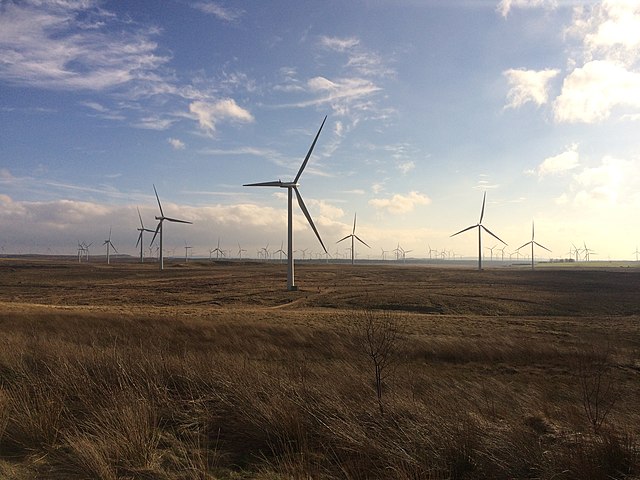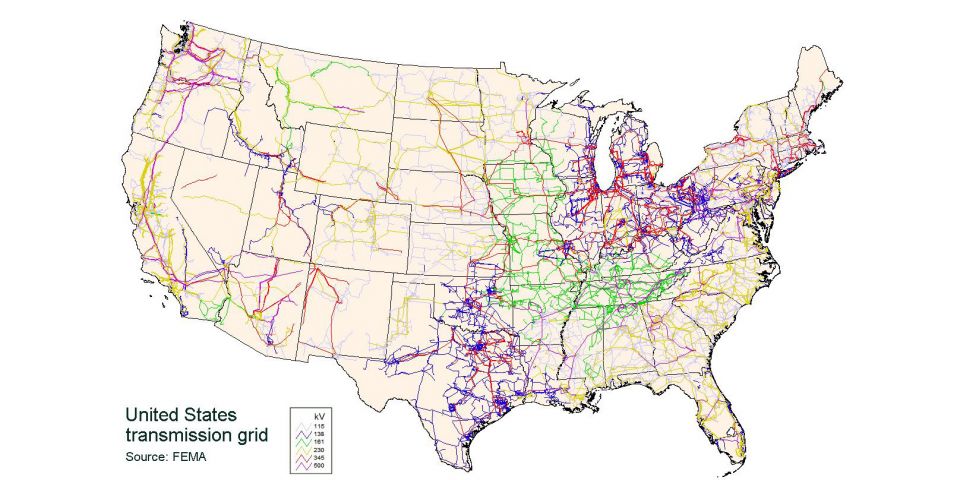Solyndra, and its possible impacts on nuclear
 I'm sure everyone has heard all about the Solyndra "scandal" by now. There have been too many news stories to count on this subject (no need to provide links). So, instead of delving into the details, or giving a blow by blow account of all the events and the hearings in Congress, I will focus on the impacts this whole affair may have on government support for nuclear, and for clean energy in general.
I'm sure everyone has heard all about the Solyndra "scandal" by now. There have been too many news stories to count on this subject (no need to provide links). So, instead of delving into the details, or giving a blow by blow account of all the events and the hearings in Congress, I will focus on the impacts this whole affair may have on government support for nuclear, and for clean energy in general.
A brief summary of the issue
As part of a general program to support clean/renewable energy sources, the federal government provided Solyndra, the maker of a certain type of solar panel, a $535 million loan guarantee in 2009. Soon after the loan guarantee was awarded, however, market conditions for the company deteriorated, rendering it unprofitable.
The price for solar panels has dropped significantly in the past year or two, primarily due to cheap solar panels produced in China, which heavily subsidizes its solar producers, in addition to having cheap labor. Also, China (and the world in general) appears to have ramped up solar cell production capacity too rapidly, resulting in a supply glut that has, at least temporarily, resulted in a dramatic price drop. It is unclear if most or all solar producers are currently selling at a loss (i.e., not recouping their investment in production capacity), but relatively high-cost producers like Solyndra are clearly being priced out of the market.
As a result, Solyndra recently shut down all operations and filed for bankruptcy. This in turn has resulted in the government losing the $535 million dollars it loaned the company.
The failure of the Solyndra loan has been highly publicized, and has led to congressional investigations and a significant amount of political controversy. Many have accused the Obama administration of incompetence, arguing that the company's deteriorating prospects should have already been apparent when the loan guarantee was awarded. Others are using this issue to question the general idea of government providing assistance to specific energy sources or companies (i.e., government support of "clean" energy sources).
Nuclear loan guarantees questioned
New nuclear projects, such as at Vogtle, are also receiving federal loan guarantees. Some policymakers, including the Obama administration, would like to increase the nuclear loan guarantee volume.
Perhaps predictably, nuclear opponents such as Rep. Ed Markey (D., Mass.), have suggested that nuclear loan guarantees should also be scrutinized, or perhaps eliminated, in light of Solyndra. That is, they should be given the same scrutiny/treatment as loan guarantees for renewables. There are significant flaws in this reasoning, however, given the substantial differences in terms between loans given to nuclear projects, and those given to renewable energy projects.
For nuclear project loan guarantees, the government requires that the utility pay a large sum of cash, up front, to the government. This cash payment (the "credit subsidy fee") is essentially an insurance premium, which compensates the government for the risk of loan default. It is somewhat analogous to mortgage insurance that some homeowners pay. The amount of the cash payment is determined, on a project-specific basis, by the federal Office of Management and Budget (OMB). The required amount can vary significantly for different projects, based on various market factors like whether they are in a merchant or regulated market, if they have a long term power purchase agreement, etc.
The amount of the insurance payment is significant. It can be as much as $1 billion, i.e., a significant fraction of overall project cost; enough to significantly impact the project's overall economics.
In fact, the cash payments that the OMB has requested have been enough to make a loan guarantee not worthwhile in some cases. Constellation Energy rejected the federal loan guarantee for the Calvert Cliffs-3 project. The government wanted a cash payment of $880 million, equal to 11.6 percent of the total loan amount. Constellation said that not only would those terms render the project non-viable, but that it could probably get better terms on the open market, with no government help. (Some "subsidy", eh?) In other cases, such as for Vogtle, the calculated fee is much less, and the loan guarantee remains worthwhile.
With renewable project loan guarantees, the OMB also determines the "credit subsidy fee" that would be required to adequately compensate the government for the risk of loan default. As with nuclear loans, the amount of this fee can be very significant, enough to greatly impact the economics of the overall project. (In other words, the OMB has found renewable project risks to be similar to nuclear project risks.)
There is an enormous difference, however. As part of the stimulus package, the federal government has been paying the credit subsidy fees for renewable projects. The fee was determined by the OMB, but then the government appropriated funds to pay that cost. (At least the subsidy is quantified and documented.)
Not only does this difference in terms have a huge impact on project economics, but it also probably has a significant impact on project risk. A nuclear project has to pay the (huge) credit subsidy fee, along with ~$100 million in licensing costs, before it can even start construction. Thus, it has a large investment at stake. With the government paying the credit subsidy fee, renewable projects have much less at stake financially. They don't have to invest anything up front (or perhaps ever), and the government pays off the loan if the project fails. This, in theory, results in riskier, less viable renewable projects going forward, whereas nuclear companies will do much more in the way of "due diligence."
Another reason why nuclear loan guarantees may be more justifiable than renewable loan guarantees is the issue of "sovereign risk." That is, nuclear projects have a significant need to be protected FROM the government. Many in the nuclear industry, who remember the Shoreham debacle, view this as the main reason why government loan guarantees are necessary for new nuclear.
With a government loan guarantee, the government has "skin in the game" financially (even with a credit subsidy fee payment). As a result, it is much less likely that the government will act to kill a project just because it thinks that it may provide some short-term political benefit. For (motherhood and apple pie) renewables, this is not a significant issue.
To summarize all the above, renewable project loan guarantees are very clearly a subsidy, which (as currently structured) may encourage risky loans. It is much less clear whether nuclear project loan guarantees are a subsidy at all, and their current terms, which require large amount of money to be put at risk by the builder, are much less likely to encourage risky projects. Perhaps instead of calling for an end to loan guarantees, Congress should just require that all projects pay the credit subsidy fee determined by the OMB.
Let the "market" decide?
Attacks on the nuclear loan guarantee program, as a result of Solyndra, are not only coming from the (anti-nuclear) Left. They are also coming from the right side of the political spectrum. Many of the Republican presidential candidates were previously supportive of nuclear project loan guarantees, particularly if the project was in their state or district. Now, virtually all of them have come out in opposition to all energy project loan guarantees, including nuclear. Texas Gov. Rick Perry is one notable example.
The argument being presented by most (if not all) Republican candidates is that the government should not "pick winners and losers" in the energy industry (given how Solyndra went), and more generally that the government should not interfere with energy markets, to promote one form of energy over others. Instead, the "market should decide" what energy sources get used.
I have several problems with this line of reasoning. First of all, the notion of a "free" market with no government intervention is a complete myth. There has never been such a free and fair market. Not only is the market rife with subsidies of all kinds, given to all energy sources, but there are also huge differences in the level of regulatory requirements applied to various energy sources. The most notable example are the rigorous regulatory requirements that are applied to nuclear, which are orders of magnitude more strict than those applied to other (notably fossil) energy sources.
The second issue is that, under current policy and regulations, the enormous external (i.e., public health and environmental) costs associated with fossil fuels, particularly coal and oil, are not accounted for by the market, or reflected in their price. This represents a colossal market failure. Scientific studies estimate that accounting for external costs would roughly double the price of coal and oil derived energy.
 Spending hundreds of billions of dollars annually to patrol the Persian Gulf (and fight wars in the Middle East) in order to secure oil supplies, but not having that cost paid for by a tax on oil or gasoline, represents an enormous government market intervention. Allowing coal plants to dump massive amounts of pollution into the atmosphere for free (resulting in ~20,000 deaths annually in the United States, along with global warming), is a massive market intervention. Giving shale gas drillers a blanket exemption from the Clean Water Act (while holding anything nuclear to impeccable standards) represents a huge market intervention.
Spending hundreds of billions of dollars annually to patrol the Persian Gulf (and fight wars in the Middle East) in order to secure oil supplies, but not having that cost paid for by a tax on oil or gasoline, represents an enormous government market intervention. Allowing coal plants to dump massive amounts of pollution into the atmosphere for free (resulting in ~20,000 deaths annually in the United States, along with global warming), is a massive market intervention. Giving shale gas drillers a blanket exemption from the Clean Water Act (while holding anything nuclear to impeccable standards) represents a huge market intervention.
In my September. 28 post, I discussed external costs, and the various options we have for addressing them. One can issue regulations that require reductions in air pollution, CO2 emissions, or oil imports. Alternatively, one can reflect these external costs in the market by imposing taxes on those things. Barring either of those (more enlightened) policies, one can support or subsidize clean energy sources that do not have the above negative impacts.
Conservatives have always been dead set against either the regulatory or financial disincentive (i.e., taxation) approaches, and now, after Solyndra, they are coming out against any type of support for clean, domestic energy sources. Thus, they are against any policies that would correct the enormous market failures discussed above. When they say that the market should decide, they really mean that the current (regulatory and policy) status quo should remain intact. These policies represent an enormously slanted playing field, with what effectively amounts to a large amount of government intervention on behalf of fossil fuels.
Renewable energy sources are also the beneficiary of huge government market interventions, mainly at the state level. In addition to very large subsidies, renewables benefit from portfolio standards that require a large market share for renewables, regardless of their cost or practicality. This is a huge (essentially infinite) subsidy.
Future slanted against nuclear?
As retiring Exelon chairman John Rowe recently pointed out, in the current political climate, renewable portfolio standards are probably going to be the only policies out there to support clean energy, in lieu of more intelligent policies that tax or limit pollution and let the market decide how to respond. That will be a shame, because (as he points out) such policies will result in emissions reductions being achieved in a more expensive way.
Such (renewable portfolio standards only) policies are bad news for nuclear. Under such a scenario, fossil fuels continue to benefit from having their huge external costs not counted, whereas renewables benefit from outright government mandates for their use. Nuclear is left out in the cold.
Nuclear's external costs are tiny compared to fossil fuels and similar to renewables. It is more economical and practical than (intermittent) renewables in many if not most cases. Thus, it would do very well under any objective playing field where external costs are accounted for but the market is then left to decide.
Just a few years ago, it appeared that such enlightened policies, such as cap-and-trade and significantly more stringent air pollution requirements, were on the horizon. Now, cap-and-trade appears dead and there is enormous pressure to back down on air pollution rules. The possibility of passing (badly needed) limits on air pollution has even resulted in calls by some to eliminate or emasculate the Environmental Protection Agency. No such pressure on the Nuclear Regulatory Commission.
We've all been hearing about how the nuclear renaissance is diminished or dead, and how the reason is because (new) nuclear is no longer economical (due to the "shale gas miracle", or whatever). My view is that much of this is due to government policies, and a market/regulatory playing field that is very slanted against nuclear. I hope the discussions above have illustrated some of the basis for this view.
In any event, the industry needs to aggressively defend the preservation/expansion of nuclear loan guarantees, as well as the formation of a Clean Energy Bank, and a CO2 tax or cap-and-trade system over the longer term. In terms of policy, things have gotten much worse for nuclear over just the last few years, with no CO2 limits, possibly no more loan guarantees, and possibly less strict air pollution requirements. The economic downturn and the gas glut aren't helping either. Our current (political) course won't cut it, if nuclear is to have much of a future.
__________________________________
Jim Hopf is a senior nuclear engineer with more than 20 years of experience in shielding and criticality analysis and design for spent fuel dry storage and transportation systems. He has been involved in nuclear advocacy for 10+ years, and is a member of the ANS Public Information Committee. He is a regular contributor to the ANS Nuclear Cafe.








